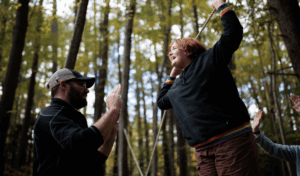Since this month’s feature is about a balanced approach to anxiety treatment, today I am going to share five categories of activities that have been shown to foster resiliency, hope, and well-being in the face of challenging situations.
These five different types of activities were first identified in Occupational Therapy literature, by Dr. Rachel Thibault, who specialized in working community-based rehabilitation settings in post conflict and disaster relief initiatives. During her work in these settings, Dr. Thibeault conducted research on what activities supported individuals in finding hope, resiliency, and meaning despite their dire circumstances. She was able identify five different types of activities essential to fostering well-being in the face of challenging situations. It has since been suggested that all people should strive to incorporate these activities within their daily routine as a way to buffer against the stressors of everyday life.
Below is a chart that describes the different activity subtypes, along with examples of activities for that category. It is recommended that someone try to engage in at least two of the five activity categories a day as a means to promote their hope, resiliency, and wellbeing.
[table id=7 /]

